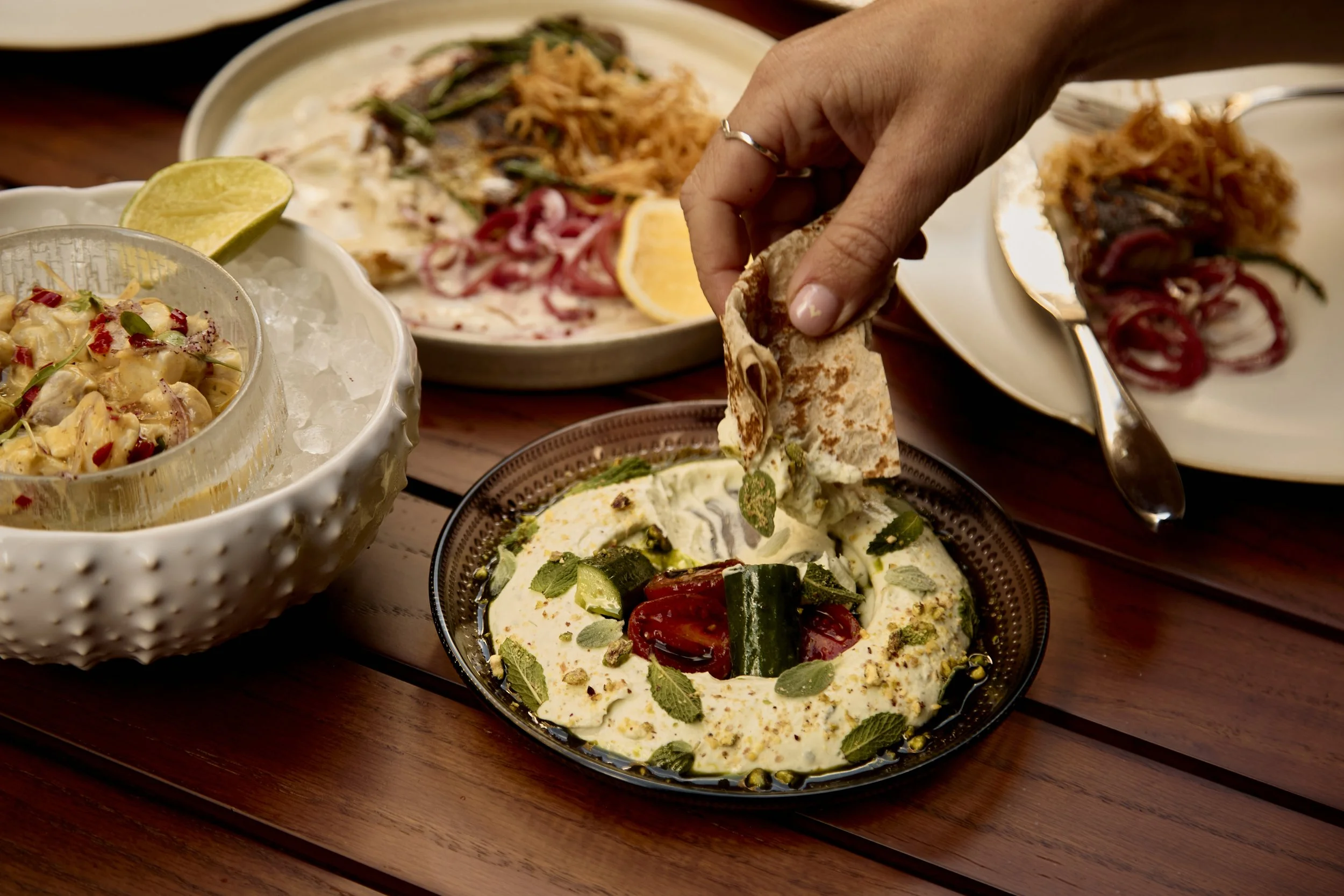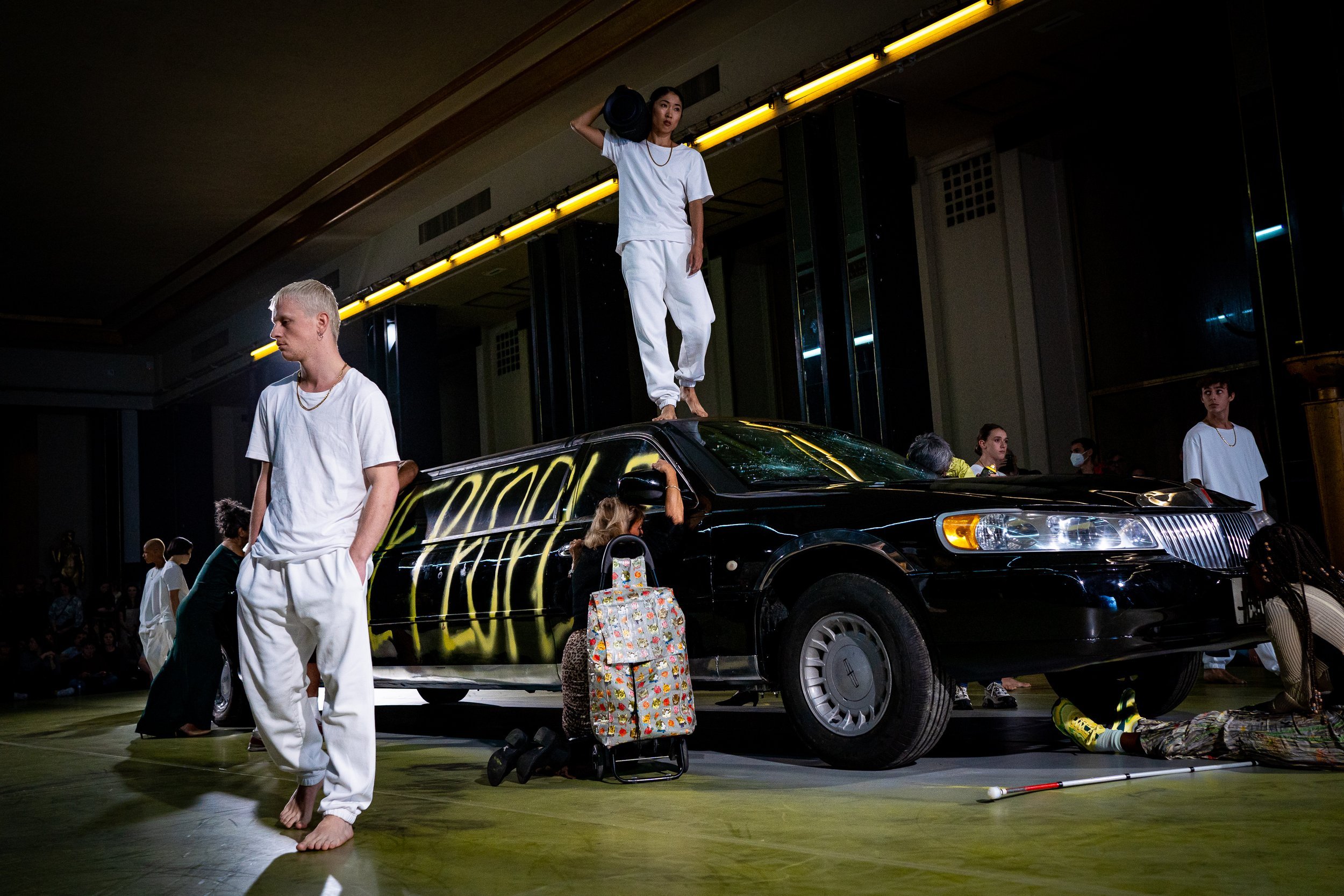In conversation with Eric Pina
“I have always been interested in meeting people, communicating with them and sharing ideas with others, as these moments can enrich our lives.”
- Eric Pina
Image: Eric Pina
Eric Pina is a Senegalese artist who studied at l’Ecole Nationale des Beaux-Arts in Dakar before completing his training in Europe where he received a degree from l‘Ecole Supérieure d’Art de Mulhouse et de Haute-Alsace in Mulhouse, France. Focusing on human body language and the micro-interactions between people and cultural backgrounds, Pina’s practice comprises painting and drawing as well as printmaking and sculpture. Imagining intimate, parallel universes that opportune a multitude of scenarios and ‘small’ moments, a Pina composition amasses an unlikely group of citizens in what appears to be an ambiguous waiting game; despite their diverse material incarnations, his figures maintain an emblematic presence even when removed from their context or isolated from a given journey or task. Pina was selected for exhibition at Dak’Art Biennale of Contemporary African Art in Dakar, Senegal, in 2014, and has had solo presentations in Germany, Switzerland, Canada, and France.
How did your journey into art begin?
I was interested in drawing and modelling from an early age and was inspired by my father’s traditional paintings. After finishing school, I started studying art at the Ecole des Beaux-Arts Dakar (1993 to 1995), before moving to Mulhouse to continue at Le Quai -Ecole d’Art Supérieure de Mulhouse et du Haute Rhin in France from 1995 to 2000. After some residences in Switzerland and Canada, I now live in Hannover, Germany.
How would you describe your artistic style? Would you say there is some sort of recognisable characteristic?
In the past, my artistic research focused a lot on the shadows and silhouettes of people passing by. My work was more abstract then than it is now, as the darkness of the drawings and engravings were more present then. People appeared as monochrome surfaces with less details in those drawings. The absence of architectural elements in my current drawings are now mostly replaced by the presence of the characters. Now I try to work more on the details of the person, making the result less abstract.
What is the inspiration behind your work?
Leaving my country, Senegal, to come to Europe changed my view on people’s behaviour, rituals and traditions. I try to capture gestures, furtive glances and anonymous encounters from memory. The confrontation of coming to a “new world” inspired me a lot.
What messages and themes do you try to communicate in your work, and how has this evolved over the years?
I have always been interested in meeting people, communicating with them and sharing ideas with others, as these moments can enrich our lives.
The “cultural clash” I experienced when I came to Europe had a big influence on my work in the beginning. Later, during a trip to Switzerland in 2003 for an artistic residence at the Marc Jurt Foundation, I began to develop my personal research on “L´homme de la rue” (“man of the street”). I then started working more precisely on people in daily life. My current work reflects the cultural background less and more on realism.
Can you tell us how your current exhibition Foreign Lands has come together?
I would like to thank Ed Cross for acting as mediator for Ermias and I. Ed and I had worked together before, and it was Ed’s idea to arrange Foreign Lands.
I made my first acquaintance with Ermias via Zoom and really enjoyed talking with him. Then we met in London for the exhibition opening at Ed Cross’s Gallery. This was also my first time meeting Ed in person. We all got on very well together, so it was a very pleasant experience.
Image: Eric Pina, Instant Bref et un regard II, 2022, Foreign Lands
Do any past or present artists inspire you?
During my studies at the Beaux-Arts in Dakar, Senegal, I developed admiration for the powerful work of the sculptor Ousmane Sow. His exhibition of sculptures at the National Assembly of Senegal in 1995 had a big influence on me. I also admire the work of Louis Soutter, a famous Swiss artist of Art brut. I had the opportunity to see his drawings and paintings at an exhibition of his in Lausanne.
What is your creative process?
I am constantly collecting ideas by making sketches, picking up photos in magazines or taking photographs as reference. Sometimes I use old family pictures, historical documents or current news subjects. This is my first stage, even if I don’t know where I may use it. I decide that later. Then I start work in my studio, which is like my laboratory, to translate my emotions and expressions using different technics such as engravings, drawings, modelling etc. I don’t limit myself to a specific size. At the end I choose “my best version”.
What are your thoughts on the current representation of African and African Diaspora Art?
I believe that the works of African artists are positively received. The recognition and visibility of artists living in Africa and the diaspora are still not being given enough prominence though.
What is the best advice you have ever received?
Look closely and discern.
Can you tell us about any upcoming projects?
My London visit inspired me a lot and I have started new work based on my encounters and experiences there.
Eric Pina's works are currently on display at Foreign Lands, a collaborative exhibition featuring two distinguished African artists: Ermias Ekube, an Ethiopian-born Eritrean, and Eric Pina. The exhibition, at Ed Cross Fine Art is open until 25 March 2023.













